THE CLASSIC HORROR FILM
By Jeffrey-Baptiste Tarlofsky
By Jeffrey-Baptiste Tarlofsky
Lesson 18 consists of 6 video lectures and transcripts of those lectures, and 4 film excerpts. Start with the lecture, Part 1, and continue down the page in sequence until you reach the end of the lesson.
レッスン18は6本のビデオレクチャー(レクチャーのテキストがビデオレクチャーの下に記載されています)と4本の動画で構成されています。
このレッスンは、ページをスクロールダウンしながら最初から順番に動画を見たりテキストを読んでください。
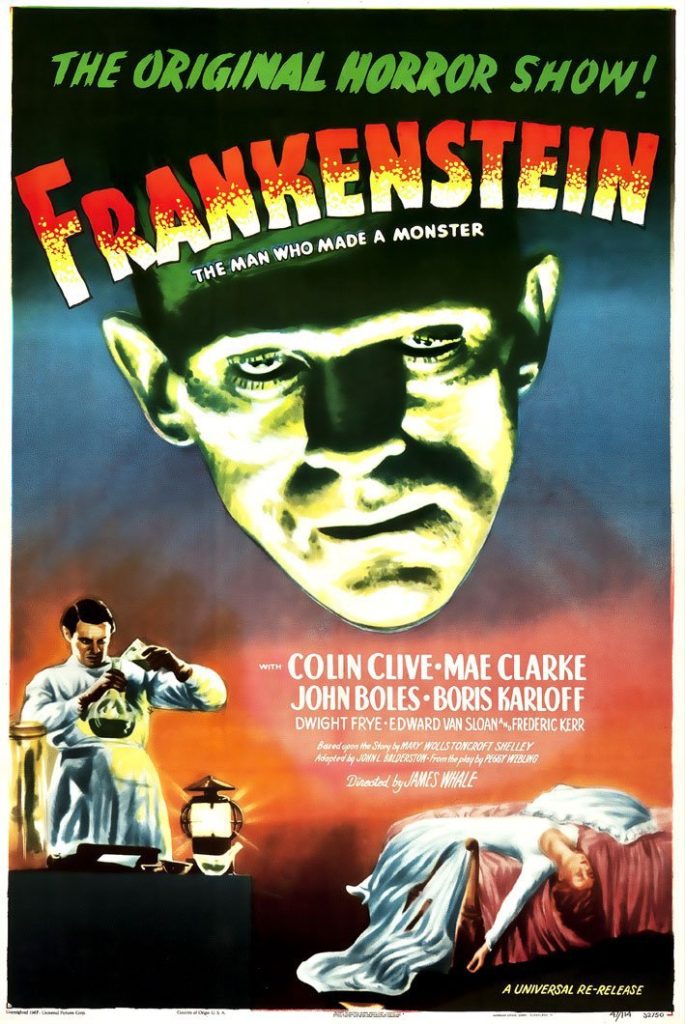
Directed by James Whale
Produced by Carl Laemmle Jr.
Written by Francis Edward Faragoh, Garret Fort based on the play by Peggy Webling and the novel by Mary Shelley
Starring Boris Karloff, Colin Clive, Edward Van Sloane and Dwight Frye
Budget: $265,000
Running Time: 71 minutes
Part 1 – The verb “to censor” means to cut or delete. Hollywood had been struggling with the question of censorship for almost a decade before the Production Code Administration was established in 1934 to enforce the production code rules that had earlier been agreed on in 1930. But even before the P.C.A. was set up, the production code rules had an effect on Hollywood film production and there is no more perfect example of this than Frankenstein. In the creation scene, the censors cut the line, “Now I know what it’s like to be God”.
Part 2 – The most powerful group demanding Hollywood censorship was the Catholic Church. They objected to any mention of God that did not conform with their own views. What is both interesting and absurd about the censoring of the creation scene is that the entire point of Frankenstein saying he knows what it feels like to be God is to show that he is wrong to believe that he can be like God and the rest of the film makes this clear by showing the many tragedies that are caused by Frankenstein “playing God”. By cutting this one line, the censors greatly diminished the impact of the films’ message, which was consistent with what the Church itself taught, i.e., that man should not try to be like God.
Moreover, audiences were not so stupid that they would actually believe Frankenstein was right to say, “Now I know what it is like the be God”. But, this was the main problem with censorship in Hollywood. The censors treated the audience as if they were children who could not be trusted to make their own judgments. This sometimes led to even more serious misunderstandings and there is no better example of this than another scene from Frankenstein. When the film was released in 1931, the scene in which the monster drowns little Maria was also censored. The censors cut the actual footage of the monster throwing Maria in the water because they considered it too violent.
Part 3 – By cutting the film at exactly this point what the censors did was force the audience to imagine what the monster did to little Maria. A large number of people in the audiences of the time imagined the worst. They believed that the Monster sexually molested the child and then drowned her deliberately! Whale never intended for audiences to believe any such thing. He actually showed the monster tossing the child in the water like a flower and immediately shows how upset he is when Maria sinks and drowns. So, far from making the film less horrific, the censors allowed the audience to imagine something much worse than what the director and writers truly intended. In turn, this led people to believe the monster was not innocent like a child but was truly evil because he suddenly molests and kills Maria. The entire movie is changed by this one idiotic act of censorship. In my opinion, the only “evil” here is in the censors almost completely changing the film through their incredible stupidity.
The whole point of the film that John Balderston wrote and James Whale filmed was to show the audience that the monster was actually innocent and even potentially good (remember him holding the flower and reaching for the light?). People were afraid of him because he was big and ugly and they simply assumed the deaths he caused were murders. This is why we have laws and police and courts and a legal system that examines all the evidence before we sentence someone to punishment without knowing all the facts. But the villagers in Frankenstein do not try to arrest the monster, they burn him alive in the mill. Remember what that mill symbolized (the cross). James Whale intended that this near-final image in the film would inform the audience that the monster, like Jesus Christ, was the innocent victim of mob justice. If the censors had been at all intelligent, they would have seen the meaning of the windmill…and doubtless would have cut this scene, too! But censors are almost never clever people. Those who destroy the creative work of others usually do so because they are incapable of doing such work themselves.
But this is really just the beginning of the story of censorship in Hollywood. The so-called “production code” was drafted in 1930, but not truly implemented until 1934. It was in this year that the Catholic Church threatened to order all Catholics (20% of the U.S. population) to boycott Hollywood films if the code was not fully enforced. The film industry responded by accepting the appointment of a conservative Catholic, Joseph Breen, to head up the Production Code Administration…the censorship office of Hollywood.
The rules of the code were quite detailed. According to the Code, there could be no depictions of drug use (but alcohol was okay), prostitution, “sexual perversions” of any sort (which included homosexuality, bisexuality, transgendered people…but cross-dressing was okay), sex of any kind could not be shown even to the point where there was a rule that a kiss could only last for three seconds. The rules stated that even married couples were not to be shown sleeping in the same bed. Nudity of any kind was banned. Any criticism of religion was banned (which included any negative portrayal of religious leaders or rank and file clergy). Criticism of the government and law enforcement was severely limited. Individuals in government or law enforcement could be shown to be corrupt, but not institutions. Criticism of foreign governments was also banned.
Keep in mind that these are the rules for Hollywood films, not society as a whole and these are industry rules, not laws. But by any reasonable standard, if Hollywood were a country in 1934, it would be considered a police state, not a free and democratic one. In fact, the rules Hollywood imposed on itself were not very different from the rules in police states of the time such as fascist Italy, the Soviet Union, and Nazi Germany.
Isn’t it interesting that self-censorship in Hollywood goes into effect less than one year after the rise of Adolf Hitler and the Nazis to power in Germany? Isn’t it interesting that all the censorship rules imposed in Hollywood are more or less the same censorship rules the Nazis imposed on the German film industry at almost exactly the same time? Isn’t it interesting that the main force driving Hollywood self-censorship was the Catholic Church while the first fascist ruled country in the world was Italy where the dictator, Benito Mussolini, was both a strong supporter of conservative Catholicism and strongly supported by the Catholic Church itself? (Please note that German Nazism is also form of fascism). Isn’t it also interesting that the Spanish Civil War of 1936-1939 was launched by General Francisco Franco whose fascist forces were essentially an ultra- conservative Catholic militia that was actively supported by both Nazi Germany and fascist Italy? Is all this just a coincidence?
As you already know, Carl Laemmle, the founder and president of Universal Studios, was a German immigrant who always stayed closely connected with his family back in Germany. Laemmle’s nickname at Universal was “Uncle Carl”, partly because he treated everyone who worked for him like family (his employees really did love the old man) and partly because he had a huge family and at one time it was believed he employed fifty of his relatives at the studio! They were almost all immigrants from his family’s hometown of Laupheim in Germany. Back in Laupheim, his family was not at all rich. By helping members of his family immigrate to America he was giving them a chance to improve themselves in America. (As an interesting aside, my own grandfather was doing exactly the same thing at exactly the same time by helping Jewish-Russian immigrants come to America).
Laemmle was proud of his German heritage and he loved his hometown. He was equally proud to be a Jewish German. This made him part of a small minority In Germany, but it did not make him any less German. Consider an analogy in Japan. Only a small minority of Japanese are Christians, but being a Christian does not mean they are any less Japanese. Empress Michiko is a Christian, for example.
For almost one hundred years the Jews of Germany had enjoyed the rights of full citizenship and full participation in German society. In fact, they were among the most successful groups in Germany having devoted themselves to higher education in fields such as law, science and medicine. Contrast this to how Jews were treated in Russia at that time where they were denied full citizenship and constantly harassed and even murdered with the consent of the Russian Tsars (emperors).
The Jews in Germany made up less than 1% of the population, but their contributions to German culture, industry and economics were outstanding. They were also loyal to their country. During World War One, young German Jews served in the German army at a higher percentage than Christian Germans did. So…how was it possible for Germany to suddenly turn on this tiny minority of its own people who had been such good and loyal citizens?
The truth is that there has always been discrimination against minority groups everywhere in the world. Christians in Japan were persecuted at one time. Muslims in China are persecuted now and as I already mentioned, Jews are terribly persecuted in Russia. But Germany had been relatively free of this kind of problem when the nation was successful and prosperous. Everyone got along and the Jews were an accepted part of the community.
However, after Germany lost World War One, the nation went into a terrible economic decline. Do you remember what I taught you about F.W. Murnau? I said he could not afford to buy the rights to Dracula because the German currency was so weak in 1922 that he could not pay the price Bram Stoker’s widow asked. For a short time (1923-1929) the economy recovered somewhat, but then the stock market crashed in New York in 1929. This set off the global Great Depression. American banks had rescued the German economy in 1922 and kept it healthy until 1929 by loaning Germany and German companies huge amounts of money, but when the market crashed 1929 it set off a banking crisis. Remember that the banks could no longer afford to loan money to the Hollywood studios to make films after 1930? This was why Universal Studios had to make Dracula on such a small budget. They could not borrow money from the banks. If the banks could not lend money to Hollywood they certainly could not keep loaning it to Germany. As a result, the German economy went into collapse. Factories closed, shops went out of business and the unemployment rate reached as high as 40%.
It was during this economic collapse that Hitler and the Nazis appealed to the worst emotions in the German people. They argued that all Germany’s problems were caused by the Jews and Communists and foreigners. It made absolutely no sense (Remember, Jews were less than 1% of the population of Germany and extremely loyal Germans). But people wanted to blame someone for their problems and Hitler chose the Jews.
As soon as they came to power in 1933, Hitler and the Nazis began taking away the basic rights of the Jews. Although many Jewish families had lived in Germany for hundreds of years, they had their German citizenship taken away! Doctors were denied the right to practice medicine, lawyers could not practice law, professors could not teach their classes. Jewish shops were boycotted and sometimes attacked. Germany quickly became a prison for the Jews instead of a home.
From America, Carl Laemmle looked back at his homeland with a feeling of true horror. What did Uncle Carl do? Remember why he was called Uncle Carl? Because he was a sweet little old man everyone loved and because he was nice to everyone and took good care of his employees (many of whom were members of his family). Carl Laemmle decided that he had to help not only his own family, but all the Jews in his hometown escape from the Nazis. This was difficult to do because the immigration rules to the USA were very strict. People had to have a job waiting for them and a guarantor. Laemmle, who was rich, became the guarantor for hundreds of Jews trying to escape from Germany. But the Nazis also imposed a very large “emigration fee” on anyone trying to leave Germany. This was usually so large that an average person could not afford to pay it even if they sold everything they owned. Again, Carl Laemmle paid the fees from his own fortune. Most of Laemmle’s fortune was from his ownership of Universal studios. From 1934 to 1936 he borrowed more and more money against his ownership of Universal to help rescue the people from his hometown from the Nazis who were increasing their violence and abuse of the Jews daily.
Finally, by late 1936, Laemmle had borrowed so much money that when the studio hit a brief slump he had no resources left to keep control. The people he had borrowed the money from took control of the studio away from him. Then they fired both Laemmle and his son, Carl Laemmle Jr. Despite losing control his studio, Laemmle continued the fight to rescue the Jews of Germany from the Nazi monsters. Three years later, an exile from the great studio he built, Carl Laemmle died of heart disease shortly after the start of World War Two. But “Uncle” Carl Laemmle saved at least three hundred people from being horribly murdered by the Nazis.
Part 4 – The new management at Universal Studios agreed with the ideas of the Catholic Church and Joseph Breen, the head of the Production Code Administration. Thus, after producing Dracula’s Daughter under Carl Laemmle senior and junior, the studio stopped making horror films for almost three years. It proved to be a costly and stupid decision. Can you imagine Toyota suddenly saying, “Well, we have decided to stop making cars and will start making television sets”. For six years Universal had been profitable largely because it had become “Uncle Carl’s House of Horror”, producing such classic horror films as Murders in the Rue Morgue, The Old Dark House, The Mummy, The Black Cat, The Raven, and The Invisible Man.
Almost immediately, Universal started to lose money under the new management and its “anti-horror” policies.
Even before the Laemmle’s were forced out of Universal, Joseph Breen was attempting to interfere with production at the studio. He was particularly concerned with Dracula’s Daughter. As we have already discussed, Universal Studios followed the success of The Bride of Frankenstein (1935) with a Dracula sequel, Dracula’s Daughter (1936). Although Universal got everything right with its first sequel, The Bride of Frankenstein, they made a serious mistake with Dracula’s Daughter. Certainly, having the name “Dracula” in the title was a big draw, but Universal failed to actually bring back the Dracula character played by Bela Lugosi. What audiences most loved about Bride of Frankenstein was seeing their beloved monster played by Boris Karloff return in another film. But Universal replaced Bela Lugosi’s Dracula with his daughter played by Gloria Holden. Although Gloria Holden is an interesting character in her own right, she was no match for Bela Lugosi. Despite being profitable, the film was not the major success of either the original Dracula or the sequel Bride of Frankenstein. However, Dracula’s Daughter is of interest to us because it is an example of how much power the Production Code Administration under Joseph Breen had in Hollywood in general, and specifically, over the production of horror films at Universal even while the Laemmles were still in charge of the studio.
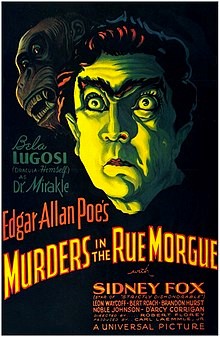

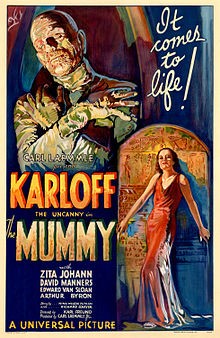
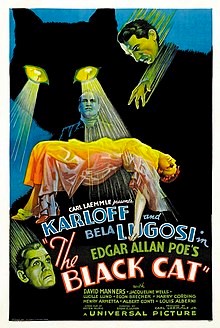
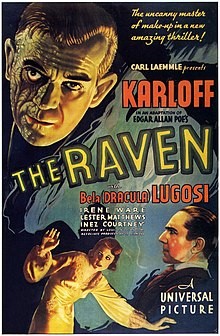
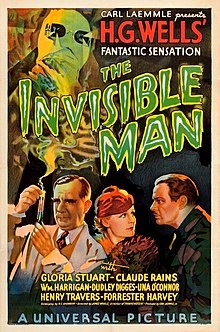
In the case of Dracula’s Daughter, Joseph Breen’s concern was not with blasphemy or violence, but with “sexual perversion”. Dracula’s daughter, you see, is pretty clearly a lesbian. She never says this in the film, nor does anyone else say it because even saying the word “lesbian” was against the production code. But Dracula’s daughter only attacks beautiful young women. This is a lady vampire who prefers other women. Let’s have a look at this brief excerpt from Dracula’s Daughter.

Dracula’s three “wives” in the castlet
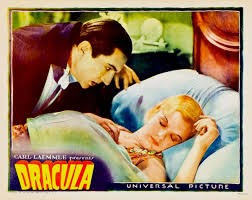 Part 5 – Of course, the whole premise of the vampire is sexual. In Dracula, we have a vampire who makes his victims into his “wives” by drinking their blood and then forcing them to drink his blood. When he comes to London, he attacks the two English girls by entering their bedrooms at night through a window and approaching their beds while they are asleep. The suggestion of rape could not have been stronger. In fact, the censors would never have allowed such a scene in an ordinary film. If they had read “a man sneaks into a woman’s bedroom at night and approaches her bed with an evil look” they would have censored it out completely. But Universal explained that Dracula was only going to drink her blood! The censors said, “Oh…okay then!”. The same happened in Dracula’s Daughter. The Countess isn’t having sex with her victims, she is just drinking their blood so that makes it all okay! This is the logic of censorship…sex is forbidden, but drinking blood, (a form of cannibalism), isn’t! They completely missed the fact that a vampire attack (heterosexual or homosexual) is a symbolic sexual attack.
Part 5 – Of course, the whole premise of the vampire is sexual. In Dracula, we have a vampire who makes his victims into his “wives” by drinking their blood and then forcing them to drink his blood. When he comes to London, he attacks the two English girls by entering their bedrooms at night through a window and approaching their beds while they are asleep. The suggestion of rape could not have been stronger. In fact, the censors would never have allowed such a scene in an ordinary film. If they had read “a man sneaks into a woman’s bedroom at night and approaches her bed with an evil look” they would have censored it out completely. But Universal explained that Dracula was only going to drink her blood! The censors said, “Oh…okay then!”. The same happened in Dracula’s Daughter. The Countess isn’t having sex with her victims, she is just drinking their blood so that makes it all okay! This is the logic of censorship…sex is forbidden, but drinking blood, (a form of cannibalism), isn’t! They completely missed the fact that a vampire attack (heterosexual or homosexual) is a symbolic sexual attack.
However, vampire or not, Joseph Breen himself insisted that one particularly sexy scene in Dracula’s Daughter be changed (the young woman is not allowed to show too much skin) as she is attacked by the Countess and at Breen’s insistence later in the film a doctor confirms that she was attacked by a vampire (i.e., not a lesbian). In other words, according to the P.C.A., Joseph Breen, and the Catholic Church, lesbians were worse than vampires. Breen, of course, didn’t approve of vampires, either, nor did he have much sympathy for any horror films in general. He would have preferred that they not be made at all and in late1936 he got his wish when the Laemmles lost control of Universal Studios.
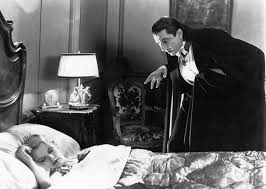
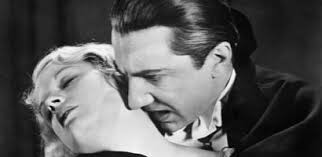

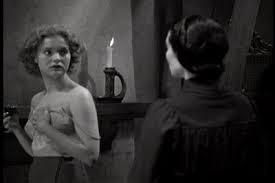

It was a sad day for Universal and Hollywood when the Laemmles were ousted, but it was also to be the (temporary) death of horror films. But in 1938, something happened that would make Universal reconsider its ban on horror films. A small movie theatre in Hollywood got the idea to celebrate Halloween by offering a double feature of the old Universal classics Dracula and Frankenstein for four days before the holiday. Recall that in those days the only way to watch movies was in a movie theater. This was before television and long before the VHS or DVD and long, long before computers and the internet. Usually, movies were released only once, but if they were very successful they would get another run again six months later or so. After that, they went into the vaults at the studios and were usually never seen again. In fact, many of the Hollywood studios simply destroyed their old films in order to recycle the chemicals. Over 90% of all films made from 1895 to 1927 have been lost! But Universal Studios had carefully preserved Dracula and Frankenstein and were quite willing to rent them out to that little theater in Hollywood.
When the theater manager opened the doors on the first night of the revival he got the shock of a lifetime. He had about two hundred seats in his theater and there were over a thousand people waiting to buy tickets. He actually had to call the police to control the crowd. He made a short speech thanking everyone for coming and suggesting those who could not get in come again the next night. But the following night there were two thousand people waiting outside his theater. As a result, he went back to Universal and rented the films for an extra month. Universal quickly understood the importance of their old films and in late 1938, after yet another change of top management, they re-released the two old classic horror films nationally to great success. Almost immediately the new, new management put horror movies back into production and the first new film they released was The Son of Frankenstein (1939). Despite having Karloff return for a third time as Frankenstein’s monster and adding Bela Lugosi playing Igor, another hunchback who befriends the monster, and Basil Rathbone, a popular new star, playing the son of the original Dr. Frankenstein, the film suffered from “third film syndrome” (i.e., the third film in a series is usually terrible). The Son of Frankenstein is very inferior to the first two films. Yet, it still made money. Audiences were still loyal to the brand. Universal would go on to make the truly dreadful fourth film, Ghost of Frankenstein in 1942 (the fourth films in a series are usually even worse than the third and so on). Dracula would also get a third film (again without Lugosi) when Universal released the mediocre Son Of Dracula (1943). In fact, except for the first sequels, Bride of Frankenstein and Daughter of Dracula, all the other films featuring Dracula and Frankenstein’s monster are inferior.
Son of Frankenstein trailer Son of Dracula trailer
Part 6
However, in 1941, Universal did release one more great classic horror film which would give the world the third of the three famous Universal monsters. The film was The Wolfman and we will be studying it in our next lesson.